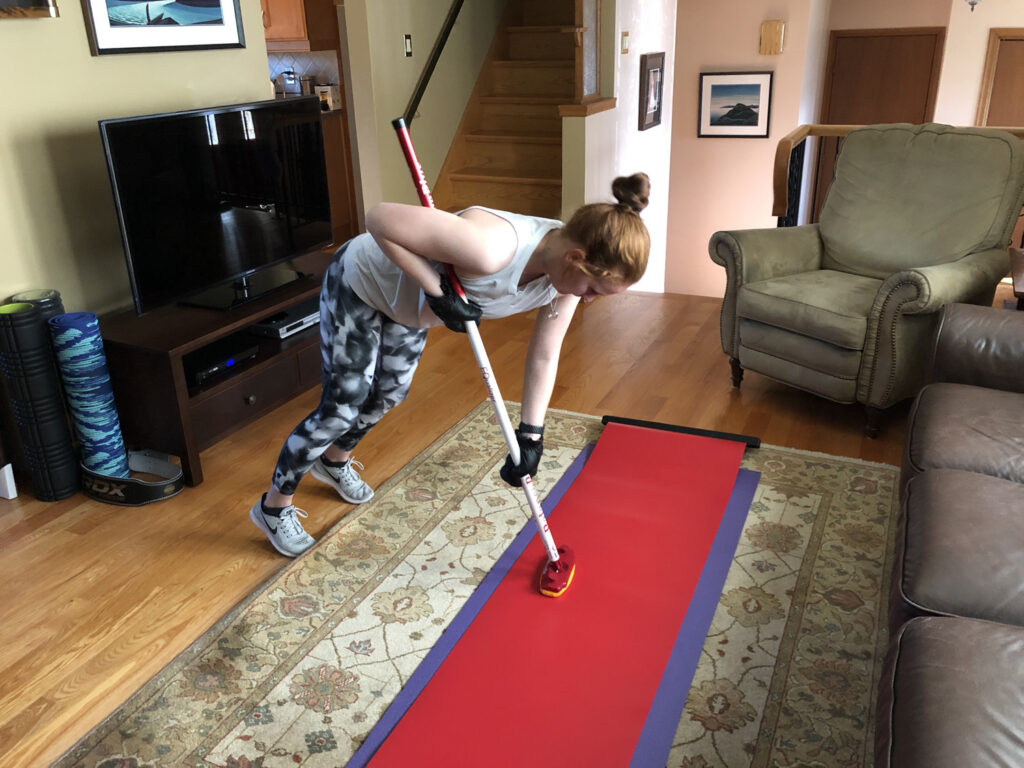Recently I was asked if one could use an ordinary bathroom scale to test an athlete’s brushing performance. Obviously doing so would constitute a static test, so its usefulness is limited since brushing is an activity of movement; so much of brushing performance is dependent on one’s body position and footwork when one is moving with the stone down the sheet. Moreover, we also know that brushing performance (typically both stroke rate and vertical force) tails off with stones thrown at higher velocities. And, finally, we also know from mechanics that, formally, there is no generation of power without movement. In a static test with the brush on the scale, no movement is produced.


Nonetheless, a static test using a bathroom scale can give an athlete an idea of the vertical force they can generate down the handle of the brush in a stationary position. It is extremely unlikely that this force will be duplicated on an ice surface, but it does permit a coach to instruct the athlete on the proper stance, body, and foot position and illustrate the vertical force that can be attained when the athlete is positioned optimally.
By and large, I’d expect someone in a static position with good body position to be able to generate a little over one-half of their body mass down the handle. This roughly corresponds to the force on the brush at the beginning of the “push” portion of a brush stroke, indicated by the dark blue arrow in the graphic above. What is missing, of course, is the additional 50% increase in force when the “push” portion of the stroke is initiated (i.e. when the brush head begins to move).
Trying it myself, I realized a vertical force of 48 kg on the brush when positioned in the open stance, and slightly higher (55 kg) when in the closed stance. These measures, normalized by my body weight, yield normalized force measures of 59.3% and 67.9% respectively. Again, these percentages easily eclipse the force I can generate on the ice when using an instrumented brush (normalized mean force of 39%), so they aren’t tremendously useful when analyzing brushing technique, since body position and footwork while moving is such an important part of the biomechanics of brushing. Nonetheless, a static measure using a scale can help inform an athlete of the possible vertical force they can generate, and how much grip strength is required in order to maintain that body position over the scale/brush head for any length of time.